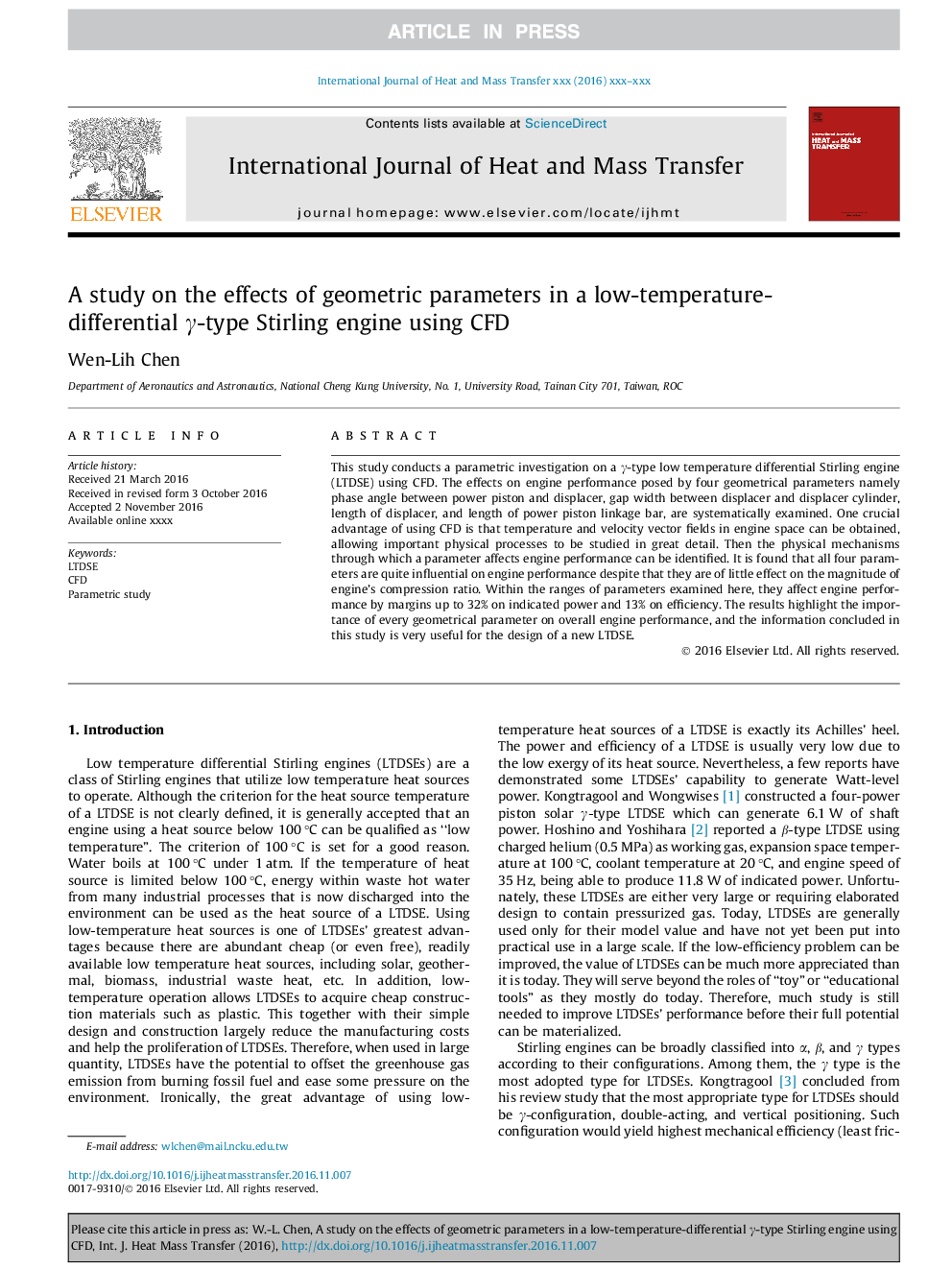| Article ID | Journal | Published Year | Pages | File Type |
|---|---|---|---|---|
| 4994650 | International Journal of Heat and Mass Transfer | 2017 | 12 Pages |
Abstract
This study conducts a parametric investigation on a γ-type low temperature differential Stirling engine (LTDSE) using CFD. The effects on engine performance posed by four geometrical parameters namely phase angle between power piston and displacer, gap width between displacer and displacer cylinder, length of displacer, and length of power piston linkage bar, are systematically examined. One crucial advantage of using CFD is that temperature and velocity vector fields in engine space can be obtained, allowing important physical processes to be studied in great detail. Then the physical mechanisms through which a parameter affects engine performance can be identified. It is found that all four parameters are quite influential on engine performance despite that they are of little effect on the magnitude of engine's compression ratio. Within the ranges of parameters examined here, they affect engine performance by margins up to 32% on indicated power and 13% on efficiency. The results highlight the importance of every geometrical parameter on overall engine performance, and the information concluded in this study is very useful for the design of a new LTDSE.
Keywords
Related Topics
Physical Sciences and Engineering
Chemical Engineering
Fluid Flow and Transfer Processes
Authors
Wen-Lih Chen,
